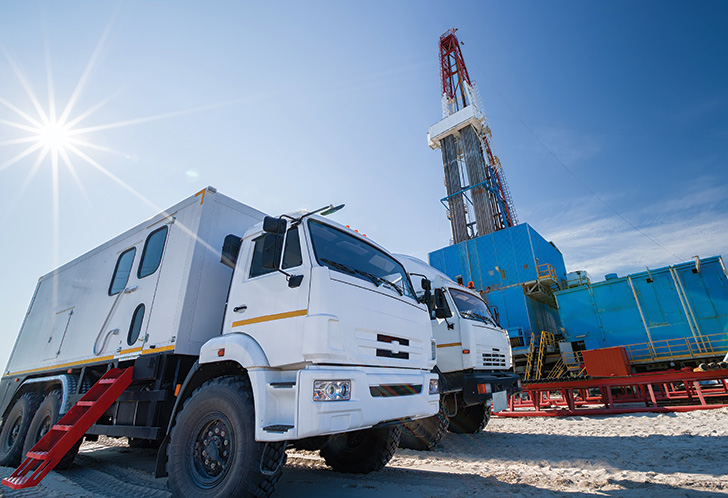Where Australia’s CSG industry is headed
There are still large parts of Australia with underdeveloped resources and strong potential for CSG production, which could help meet gas demand on the east coast. Here, we explore what the CSG industry looks like now and what we need to do to make sure it thrives in the future.

The rise of coal seam gas production in Australia has been rapid. In only two decades CSG has become the dominant source of Queensland’s gas production and helped create the state’s growing LNG export market. Australia is one of the largest exporters of LNG in the word, and is predicted to take over the top spot from Qatar by 2020.
Despite Australia having promising gas reserves in the majority of states and territories, only Queensland and New South Wales are currently producing coal seam gas, with the vast majority of production concentrated in Queensland’s Surat basin.
Over the past couple of years many CSG companies have been adapting to changes in the global market by seeking and adopting more innovative and efficient work methods and practices.
Production by numbers
CSG production started to become economical in the early 2000s, due to new applications of technology, and to meet domestic demand. Then in 2007, Santos announced the first CSG to LNG project.
Eight years later, in 2015, the total production of natural gas from coal seams was 601.8 million cubic feet (mmcf), with 596.1mmcf produced in Queensland, and 5.7mmcf in New South Wales.
In terms of active wells, at the end of the fourth quarter of 2015, Australia’s CSG industry had a total of 7,331 active wells, including 1,623 exploration/pilot/appraisal wells and 5,712 production wells.
Out of these active wells, 7,093 were located in Queensland while only 238 were in New South Wales. One of the reasons for Queensland being the undisputed hub of Australia’s CSG production is tied to LNG exports, with increased drilling activity helping to meet demand for the three major east coast LNG projects, APLNG, GLNG and QCLNG.
As of September 2016, QCLNG had the most CSG development wells drilled out of the three projects, followed by APLNG then GLNG.
A 2015 resource assessment found that while the Surat Basin and Bowen Basin were the only two basins currently producing coal seam gas in Queensland, there was preliminary exploration and assessments occurring in other basins including the Maryborough Basin, Clarence-Moreton Basin, Galilee Basin, Styx Basin and Ipswich Basin. If the local industry can determine the best way to produce CSG economically in these basins, it could potentially represent decades of growth.
In New South Wales, the only CSG came from AGL’s Camden Gas Project, but in February 2016, AGL announced it plans to progressively decommission the wells in the project, and stop production altogether in 2023.
CSG needed to meet gas demand
While the production of natural gas in Australia has more than doubled over the last two decades, there are still large parts of the country with underdeveloped resources that have strong potential for CSG exploration and subsequent production.
And according to the recent ACCC East Coast Gas report, we’re soon going to need it.
Demand for gas on Australia’s east coast, as well as other states and international markets, is increasing, which will require more exploration. Current conventional gas supply reserves are dwindling, while untapped unconventional gas reserves have the potential to step in and play an even bigger role moving forward.
In Queensland many coal seam gas wells tend to deplete faster than conventional wells, so for CSG production to continue to be viable new wells need to be continuously drilled.
Wade Elofson, Founder of Powered, an Australian energy and resource focused business development company, said that while many local producers are doing a great job bringing down production costs, there are still many international innovations which could be brought into the Australian CSG market to ensure the sector continues to grow.
“For CSG developments to be successful in the future our energy producers need to continually look for tried and tested innovations that can help lower the costs of production,” Mr Elofson said.
“For energy companies this means looking beyond conventional methods of development and production and engaging with vendors who can bring them cost-cutting technologies.”
Mr Elofson said there are some smart ways to explore and develop gas that have been overlooked in the Australian market.
“For example one of our clients, Innova out of Canada, manufacture fully Ausi compliant noise attenuation buildings in Mexico which are flat packed and shipped to Australia. These building can be assembled around any existing compressor skid and the TIC is a fraction of what has typically been available in Australia over the past five years.
“We also work with Gentherm, who manufacture gensets that have no moving parts, which require almost no maintenance.
“We work with several companies like these which offer tried and tested innovations that were overlooked during the our local industry’s growth phase from 2009 and 2013, but will now be important moving forward,” Mr Elofson said.
As major capital and operational expenditures for projects now slows down, part of the solution for producers moving forward is to look towards global innovations that can help reduce these expenditures, whether it’s a piece of equipment or a construction technique.
“If we’re constantly looking at new ways to improve what we’re doing, it could open up more opportunities in exploration, production and employment,” Mr Elofson said.


